Unlocking Potential Through Structured Interventions
Motor skills form the foundation of a child's ability to interact with their environment, participate in school, and develop independence. Applied Behavior Analysis (ABA) therapy offers a scientifically supported framework to enhance both fine and gross motor skills, particularly benefiting children with autism and developmental delays. This article explores how ABA techniques can be integrated with other therapies to promote holistic motor development, providing parents, caregivers, and professionals with practical strategies to foster growth and confidence.
Understanding the Role of ABA in Motor Skill Development
How does ABA therapy help improve motor skills in children?
ABA therapy plays a vital role in helping children develop both fine and gross motor skills. It achieves this by teaching and reinforcing specific movements and behaviors through carefully structured interventions. ABA therapists focus on breaking down complex motor tasks—such as balancing, running, jumping, or catching—into smaller, manageable steps. This approach makes learning easier and more effective.
To facilitate motor skill development, ABA uses a variety of techniques. Discrete trial training (DTT) involves repetition and positive reinforcement for each step of a movement, encouraging mastery through practice. Natural environment teaching (NET) integrates learning into daily routines and play, making it more relatable and engaging for children.
Another method is shaping, where successive approximations are rewarded, gradually guiding children toward the desired skill. Modeling, where therapists demonstrate movements, helps children observe and mimic appropriate actions. Visual tools like video modeling or even interactive devices such as robots serve as powerful prompts, helping children understand and replicate motor tasks.
In addition, ABA incorporates engaging activities like obstacle courses, dance routines, ball games, climbing, and swimming to enhance gross motor skills. These activities not only improve coordination and strength but also boost confidence and enjoyment.
By tailoring interventions to each child's unique needs, ABA therapy ensures that progress in motor skills is meaningful and lasting. Reinforcement techniques motivate children to practice and refine skills, making the learning process both effective and enjoyable. Overall, ABA provides a systematic, supportive framework for developing essential motor functions that are foundational to independence and participation in daily activities.
Benefits of ABA for Children with Motor Delays
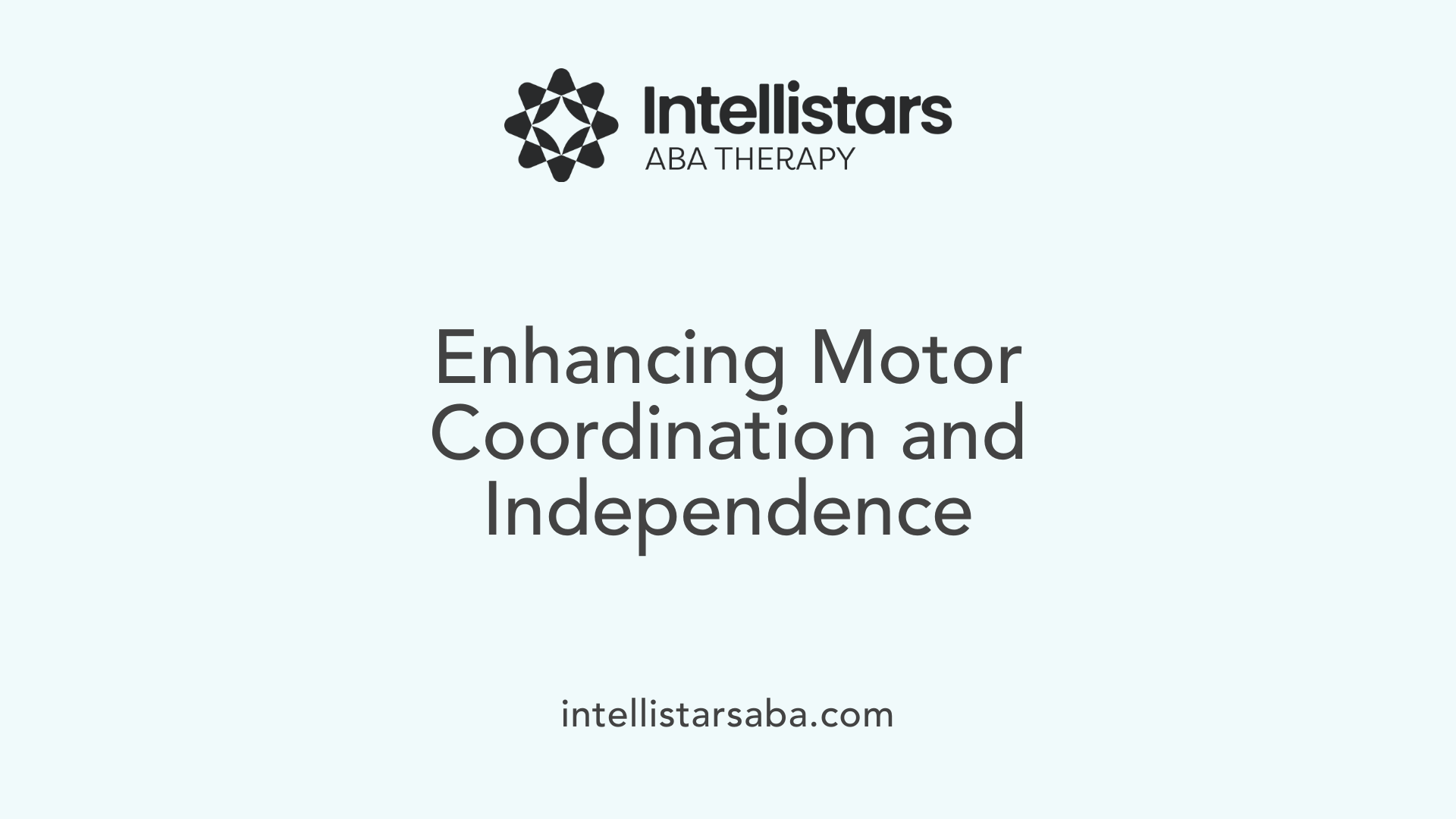
How does ABA therapy improve motor coordination?
Applied Behavior Analysis (ABA) therapy significantly supports children with motor delays by enhancing their coordination and muscle strength. Through structured routines and positive reinforcement, ABA helps break down complex motor tasks—like sitting, standing, and walking—into manageable steps. Repeated practice and tailored activities, such as obstacle courses and play-based exercises, improve balance and refine motor responses. Over time, this focused approach fosters smoother and more controlled movements, helping children execute daily activities with greater ease.
What role does ABA play in developing daily living skills?
One of the primary benefits of ABA therapy is its impact on fostering independence in daily routines. Children learn essential self-care tasks such as dressing, brushing teeth, grooming, and toileting. ABA strategies involve task analysis—breaking skills into smaller, teachable components—and providing consistent reinforcement. This structured learning helps children apply skills across different settings, making them more autonomous in everyday life. As they progress, children gain confidence and can perform self-care activities with minimal assistance.
How does ABA affect confidence and social participation?
Improving motor skills through ABA also boosts children’s confidence in their abilities. When children master movement tasks and daily routines, they are more likely to engage in social and recreational activities. ABA's emphasis on positive experiences encourages children to participate actively, reducing hesitation and social withdrawal. Enhanced motor competence helps them interact more comfortably with peers, join group play, and develop social skills—all critical for overall development.
| Aspect | Benefits | Details |
|---|---|---|
| Motor Improvements | Better coordination and strength | Fosters smooth, controlled movements in daily activities |
| Daily Skills | Self-care independence | Promotes dressing, grooming, and toileting skills |
| Confidence & Social Life | Increased participation | Encourages active engagement with peers and in activities |
By combining these benefits, ABA therapy offers a comprehensive approach that addresses motor delays and enhances overall well-being, enabling children to reach their full potential.
Strategies and Techniques Employed in ABA Therapy
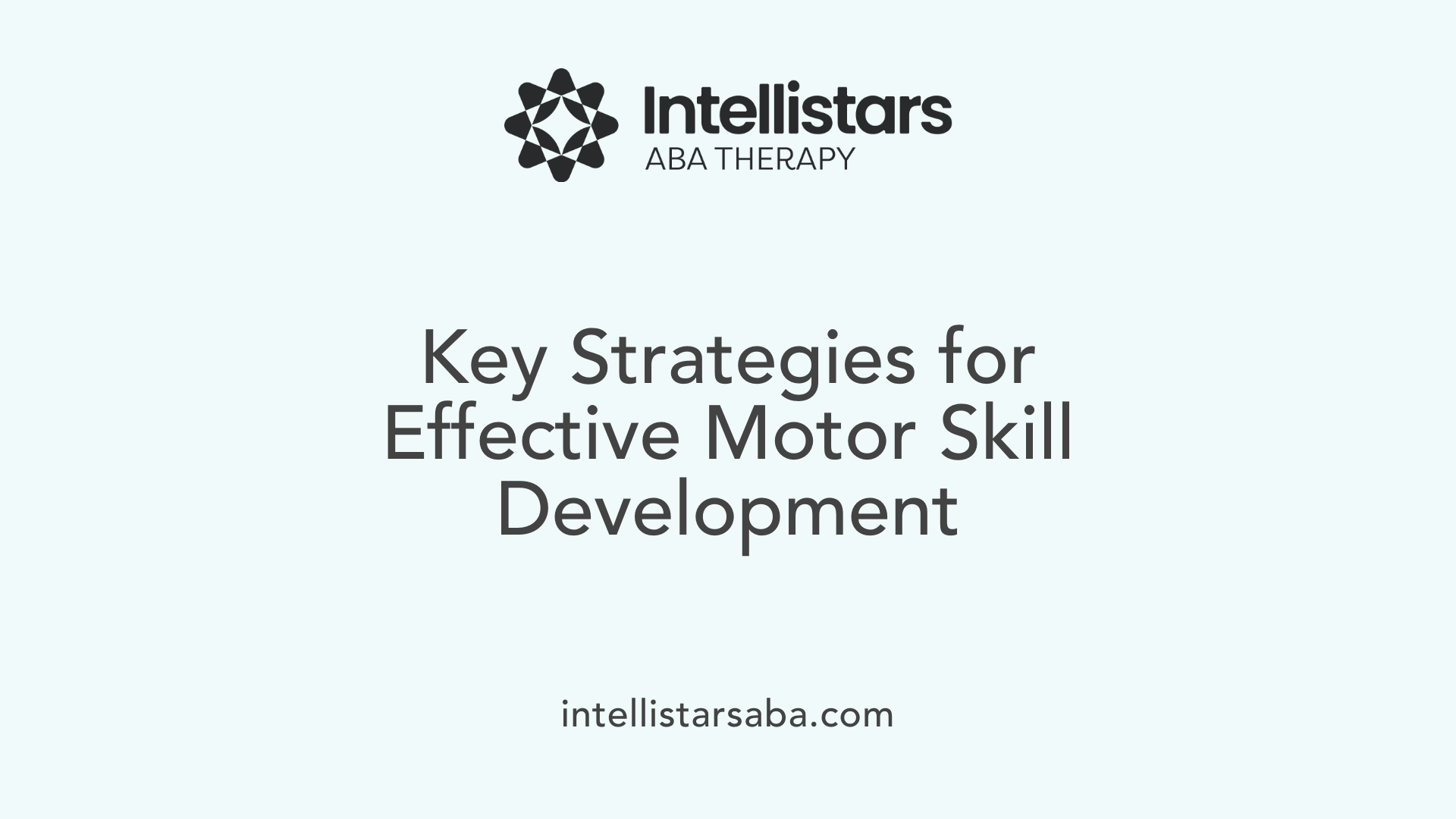
What strategies are used in ABA therapy to develop motor skills?
ABA therapy incorporates a variety of structured and personalized strategies to help children improve their motor abilities. One fundamental approach is task analysis, which involves breaking down complex motor tasks into smaller, manageable steps. For example, learning to tie shoelaces can be divided into grasping, looping, pulling, and finishing, making the skill easier to learn incrementally.
Positive reinforcement and shaping are also central to ABA. When a child demonstrates a desired movement or step, they are immediately rewarded, which encourages them to repeat and refine the action. Shaping guides children through successive approximations toward the target behavior, gradually increasing the skill's complexity.
Another effective technique is natural environment teaching, where motor activities are embedded into play and daily routines. This approach helps children learn skills in settings that closely mimic real-life situations, promoting better generalization and functional use.
Visual cues, such as picture schedules or demonstration videos, are often used to enhance understanding and provide consistent prompts for correct movements.
Caregivers and therapists work together to implement these strategies, often integrating engaging activities like playing with therapy balls, manipulating playdough, threading beads, and performing obstacle courses. These activities not only develop motor skills but also increase motivation and participation.
Research highlights that combining task analysis, reinforcement, naturalistic teaching, and caregiver involvement results in measurable improvements in both gross and fine motor skills, supporting overall development and independence.
Integration of ABA with Occupational and Physical Therapies
How can ABA therapy be integrated with occupational therapy to support motor development?
Combining ABA therapy with occupational therapy creates a comprehensive approach to improving motor skills in children, especially those with autism. ABA therapy employs structured, positive reinforcement-based techniques to develop behaviors and skills. When paired with occupational therapy, which focuses on fine motor skills, sensory processing, and daily living tasks, these strategies can be more effective.
In practice, behavioral analysts and occupational therapists often work together during joint sessions or through coordinated planning. They share observations about the child’s progress and challenges, allowing them to tailor interventions that reinforce motor skill acquisition. For example, while an occupational therapist might focus on activities like grasping objects or handwriting, an ABA therapist can incorporate reinforcement strategies to motivate and reward these behaviors.
Creating a consistent environment is crucial. Both therapies often utilize sensory-friendly settings, adaptive tools, and familiar routines to facilitate learning and comfort. Strategies such as breaking complex tasks into manageable steps and using visual aids help children understand and practice new skills across different settings.
Engaged families play an essential role. They are encouraged to apply similar reinforcement techniques and activities at home, ensuring continuity and consistency. This collaborative effort accelerates skill development and helps children generalize learned behaviors beyond therapy sessions.
Overall, integrating ABA with occupational and physical therapies offers a unified approach to support motor development, combining behavioral techniques with hands-on sensory and motor interventions for the best possible outcomes.
Activities within ABA to Enhance Motor Skills
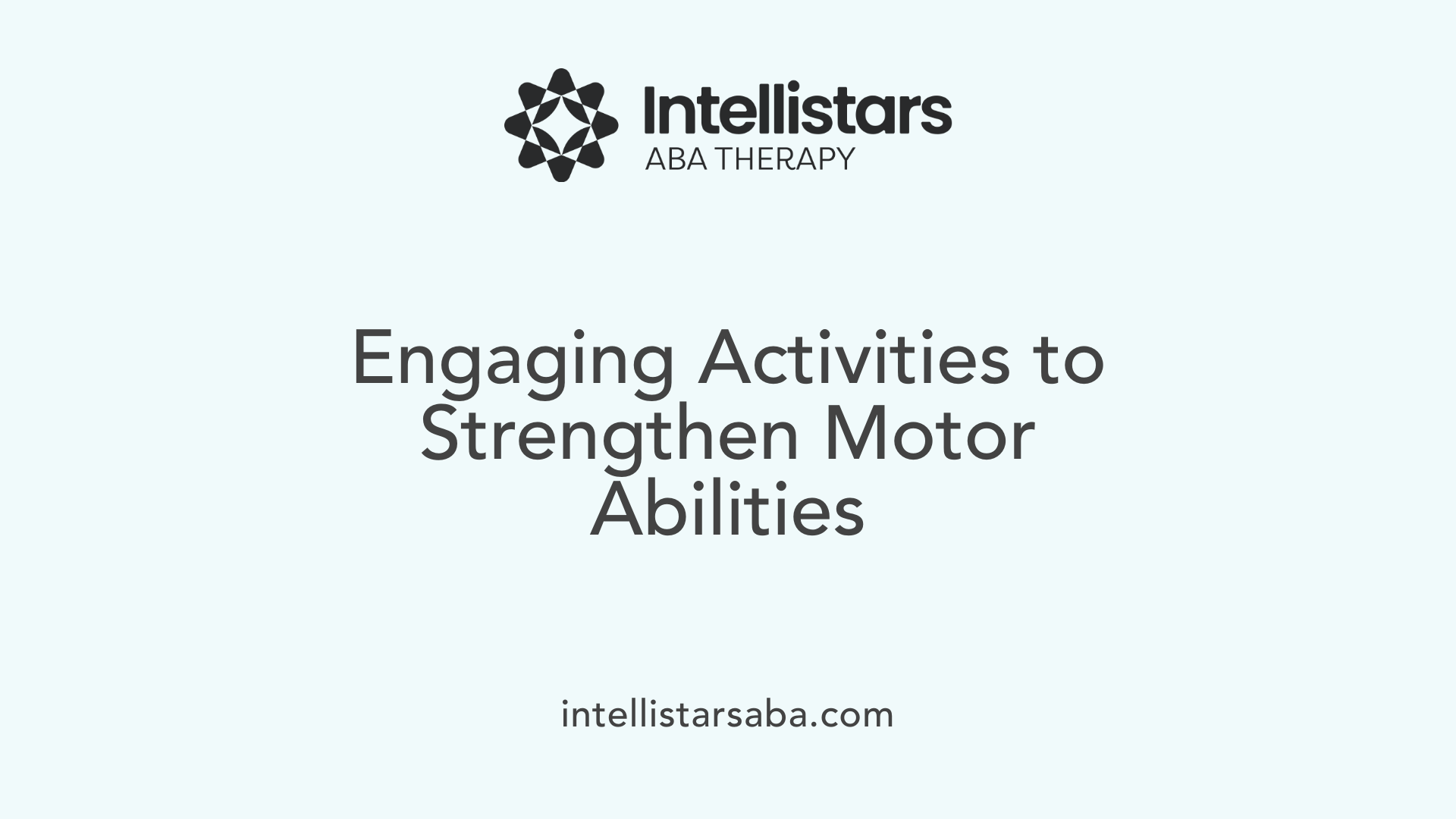
What activities within ABA therapy help strengthen motor skills?
ABA therapy offers a variety of activities designed to improve both gross and fine motor skills through engaging, structured, and personalized interventions. These activities are tailored to each child's unique needs and often incorporate elements of play, reinforcement, and practical daily tasks.
One common approach is the use of imitation games such as Copycat Movements. These exercises help children practice copying actions like clapping, waving, or simple gestures, which improve coordination, attention, and motor planning.
Structured physical exercises such as obstacle courses are also popular. These courses challenge children to navigate through different stations, promoting balance, coordination, and spatial awareness. Incorporating fine motor tasks such as bead stringing, puzzles, and arts and crafts further develops dexterity, hand-eye coordination, and precision.
Sensory play activities, including sensory bins filled with rice, beans, or water, use tactile exploration to boost tactile processing and motor control. Reinforcing these activities with praise encourages continued participation and skill mastery.
Games like Simon Says help improve listening skills, action execution, and behavioral consistency, which are important for motor development. These games also make practice fun and engaging, fostering motivation.
Practical, functional tasks such as dressing, grooming, eating, and household chores are integrated into therapy sessions. These activities promote real-life motor skills, fostering independence and self-care.
In addition to direct motor exercises, occupational therapy techniques are incorporated, including the use of adaptive equipment and skill-specific exercises that target particular muscle groups or coordination challenges.
Using visual cues—such as picture schedules or demonstration videos—and positive reinforcement strategies help children learn new skills more effectively. Consistent practice, paired with engaging activities, helps create neural pathways necessary for motor skill acquisition.
Overall, the combination of playful, functional, and sensory activities within ABA provides children with multiple opportunities to develop and strengthen their motor abilities, crucial for daily functioning and independence.
Supporting Evidence and Research Findings
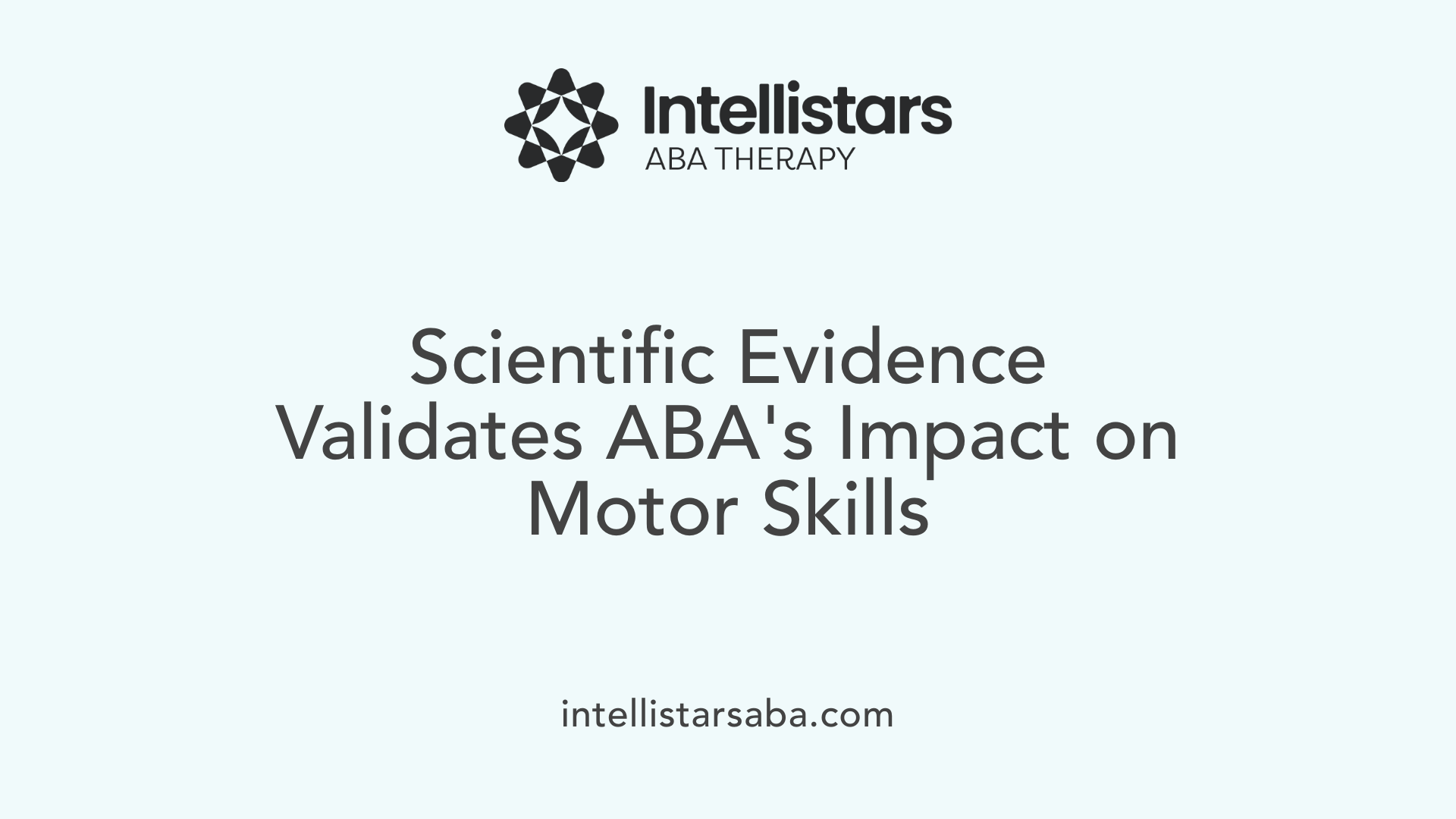
What evidence supports the use of ABA therapy for improving motor skills?
Applied Behavior Analysis (ABA) is well-supported by scientific research as an effective method for enhancing motor skills in children, especially those with autism spectrum disorder (ASD). Multiple studies and meta-analyses involving over 1,600 children have shown consistent improvements in both gross and fine motor skills following ABA interventions.
Research indicates that intensive, individualized ABA programs that employ techniques such as positive reinforcement, task analysis, and behavior chaining significantly boost motor development. Children receiving tailored ABA therapy often demonstrate better coordination, balance, and manipulation skills, helping them perform daily activities more independently.
In addition to motor improvements, these interventions often lead to broader developmental gains, including enhanced communication, social interactions, and daily living skills. This comprehensive progress is a testament to ABA's strong scientific foundation and its inclusion in evidence-based practice guidelines.
The effectiveness of ABA in motor skill development is further supported by data showing improvements in task retention and transfer, illustrating that skills learned in therapy generalize well to everyday routines. Such research underscores the importance of early, consistent intervention, and the benefits of personalized therapy plans that include motor skills training.
Overall, the accumulated evidence affirms that ABA is a validated approach to fostering motor development, making it a cornerstone strategy in therapeutic programs for children with autism.
The Broader Impact of ABA on Overall Motor and Neural Development
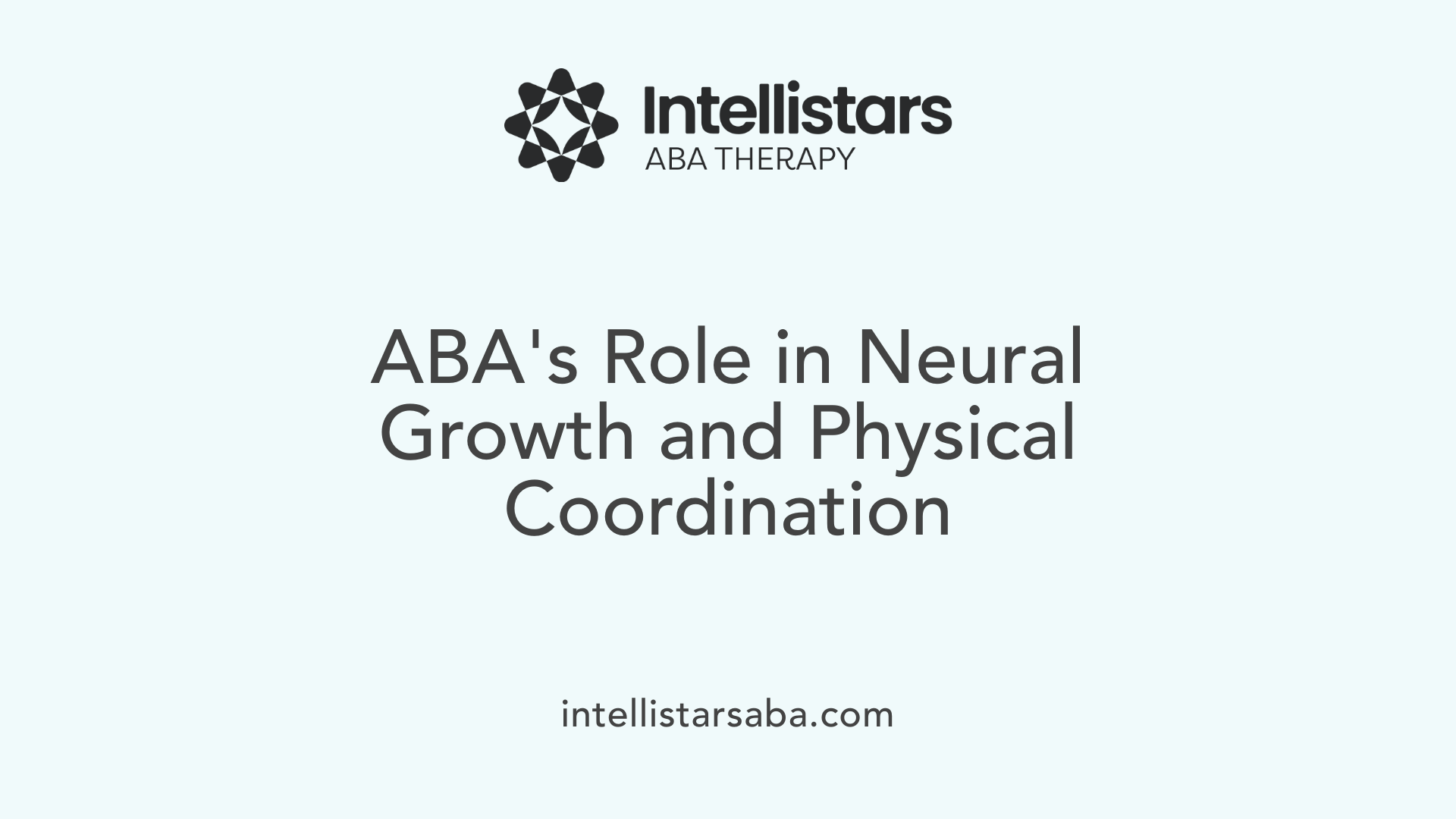
What is the role of ABA therapy in overall motor development and physical coordination?
Applied Behavior Analysis (ABA) therapy is highly effective in promoting motor skills in children with autism. It focuses on consistent, structured interventions that encourage the practice of both fine and gross motor tasks.
Through personalized activities, ABA therapists reinforce desired behaviors with positive reinforcement, making motor learning engaging and motivating for children. These activities often include tasks like sitting, standing, walking, and coordination games.
By gradually building these skills and promoting their transfer across settings—such as home, school, and play—ABA therapy helps improve overall physical coordination.
In addition, ABA integrates play-based strategies and physical activities, such as obstacle courses or using therapy balls, to strengthen muscles and enhance balance.
Understanding behavior patterns also allows ABA therapists to adapt activities to each child's interests and challenges. This personalization boosts motivation and helps children master complex movements.
Ultimately, better motor coordination supports broader neural development by encouraging the formation of reliable neural pathways for movement and coordination.
This holistic approach not only improves physical functioning but also enhances a child's confidence and ability to participate fully in daily activities, significantly improving their quality of life.
Fostering Growth with a Collaborative Approach
Supporting motor development in children, especially those with autism or developmental delays, necessitates a comprehensive, individualized approach that combines ABA therapy, occupational, and physical therapies. When these interventions work together, guided by research-based practices and active caregiver participation, children can achieve significant milestones in both fine and gross motor skills. Early intervention, consistent practice, and environmental adaptations are key to empowering children to reach their full potential, leading to greater independence, confidence, and overall well-being.
References
- Occupational Therapy and Gross Motor Skills
- What are Some of the Skills My Child Can Learn with ABA Therapy?
- How to Enhance Motor Actions in Children with ABA Therapy
- How Motor Skills Are Affected by Autism: What You Need to Know
- ABA Therapy and Motor Skills: Exploring Development Together
- Applied Behavior Analysis - Happy Play Therapy
- Boosting Motor Skills Through Pediatric Physical Therapy - Hope AMC
- Occupational Therapy For ASD: Enhancing Skills And Independence
- Autism and Motor Skills: What You Need to Know | BIFA






